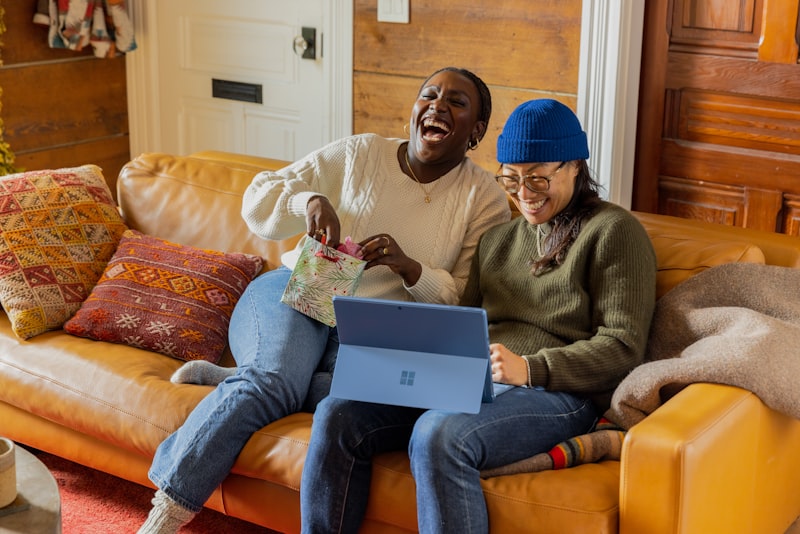You're losing customers.
Even if you aren't, your company will be at some point. The question is whether or not you'll recognize it and take action.
Churning customers (customers who stop using your product/service) is unavoidable, but there are ways to reduce it. If a customer is churning away from your business, the opportunity to earn revenue from them has been lost forever—but it doesn't have to be gone for good. There are steps you can take to reverse that trend, such as automating customer service processes and training employees on how best to serve customers.
In this comprehensive guide, I'll share my proven framework for decreasing customer churn based on years of experience running a SaaS marketing agency.
We'll cover:
- Why reducing churn is critical for SaaS success
- How to calculate your churn rate
- A 4-step process for reducing churn
- Tactics for each step of the churn reduction framework
- Real-world examples and specific actions you can take
Why Reducing Churn is Critical for SaaS Companies
Let's start by looking at why minimizing churn needs to be a core focus for your SaaS business. Here are some key reasons:
- Churn limits growth: In SaaS, growth is driven by adding new customers. But if you're losing customers as fast as you add them, you end up running in place. Reducing churn substantially increases net customer growth.
- Churn impacts revenues: Lost customers immediately dent your recurring revenue. Plus, churning customers are less likely to purchase add-ons or expanded offerings. Lowering churn has a direct positive impact on revenues.
- Churn hurts margins: Customer acquisition costs for SaaS are high. When a customer churns quickly, you lose the opportunity to earn back CAC expenses. Decreasing churn improves ROI on marketing spend.
- Negative brand impact: Churning customers are unlikely to recommend you. They may even leave negative reviews. This makes acquiring new customers even harder.
As an example, let's look at two hypothetical SaaS companies with identical customer acquisition costs and monthly subscription fees:
| Company | Annual Revenue | New Customers | Churn Rate | Net New Customers |
|---|---|---|---|---|
| A | $1.2 million | 1,000 | 5% | 950 |
| B | $1.2 million | 1,000 | 15% | 850 |
Despite equal spend, Company B ends up with 100 fewer customers due to higher churn. This directly reduces expansion potential and lifetime value.
Clearly, reducing churn is critical for sustainable SaaS success. Next, let's look at how to accurately measure churn.
Calculating Your SaaS Churn Rate
To reduce churn, you first need to measure it. Here are a few best practices:
- Use revenue churn, not customer churn: Revenue churn is a better metric than customer churn, as it accounts for the loss of high vs low-value customers. Revenue churn = lost recurring revenue from churn / total revenue.
- Calculate monthly: Churn should be measured monthly, not annually. This allows you to spot trends and test changes quicker.
- Segment churn: Look at churn by customer cohort, plan type, marketing campaign, etc. Pinpoint churn drivers.
- Remove involuntary churn: Exclude customers who churned due to unpreventable issues like going out of business. Focus reducing voluntary churn.
- Benchmark vs competitors: How does your churn compare to industry averages? SaaS benchmarks help set goals.
For B2B SaaS, a revenue churn rate of 5-7% monthly is average. Anything above 10% is high churn. As a rule of thumb, aim for under 5% monthly revenue churn.
Now let's move on to a step-by-step framework for systematically decreasing churn.
A 4-Step Framework for Reducing Churn
Based on proven results with many SaaS clients, I recommend a 4-step churn reduction framework:
- Identify At-Risk Customers
- Understand Why Customers Churn
- Create Churn Prevention Program
- Continuously Optimize Churn Efforts
Let's explore tactics for each step:
1. Identify At-Risk Customers
You can predict which customers are most likely to churn using:
- Usage data: Low product usage predicts churn. Define and track usage metrics like logins, active features, etc.
- Surveys: Asking customers direct questions on satisfaction and intent provides warning signs.
- Client success: Your CSM teams will have early visibility into dissatisfaction.
- Lifecycle stage: New customers in onboarding or ramping up are more prone to churn.
- Account health: Lack of engagement, support tickets, payment issues all increase risk.
Create a churn risk score for each customer based on these signals. Focus retention efforts on accounts with high risk scores.
2. Understand Why Customers Churn
Next, dig into the root causes of churn by:
- Analyzing exit surveys: Asking customers why they're leaving gives direct feedback. Make the survey concise.
- Listening to support calls: Customer service often hears pain points first hand.
- Evaluating usage data: See if canceled accounts had engagement issues or didn't use key features.
- Validating with CSMs: Your account managers will have perceptions on what drove churn.
Common reasons for churn include competitive switching, pricing, lacking features, complex onboarding, ineffective support, and more. Identify your top 3-5 churn drivers.
3. Create Churn Prevention Program
With root causes identified, you can build targeted playbooks to address churn factors:
Onboarding: Optimize free trials and onboarding to showcase value quickly. Add in-app messages guiding users. Offer live demos.
Education: Create onboarding checklists, in-product tutorials, email drip campaigns, and webinars to boost product literacy. Assign mentors to guide new users.
Adoption: Segment users by activation behaviors. Craft nurture campaigns to move customers to "aha moments". Offer tips within the product.
Expand use cases: Guide customers to get full value from all product capabilities via in-app prompts, email campaigns, and co-marketing. Upsell expanded use cases.
Improve UX: Fix confusing workflows. Reduce steps for key tasks. Eliminate friction points through user testing. Monitor NPS.
Account management: Have CSMs regularly review account health scores and usage. Address concerns quickly. Upgrade at risk accounts proactively.
Pricing/packaging: Offer discounted renewal rates or expanded packages to provide greater value. Make switching tiers frictionless.
Win-backs: Offer trials and incentives to resigned customers to win back. Fix the issues that led to churn.
Evaluate which initiatives best move the needle on reducing churn for your product and customers.
4. Continuously Optimize Churn Efforts
Reducing churn must be an ongoing effort. Set goals by cohort and plan tests to improve:
- Analyze metrics regularly including churn rate, activation, NPS, and account health. Look for trends.
- Refine predictive models to better identify at risk customers using machine learning algorithms.
- Audit prevention tactics to see which are most effective. Double down on what works.
- Survey departed customers to monitor if root causes change over time.
- Evolve playbooks with new retention tactics and campaigns. Share results internally.
With continuous optimization, you can achieve churn rates 50% or more below industry benchmarks.
Real-World Examples of Successful Churn Reduction
To see these concepts in action, here are two real-world examples of SaaS companies reducing churn through structured retention programs:
Case Study 1: ProfitWell
Situation: ProfitWell provided metrics solutions for subscription businesses but saw high early churn as users struggled to integrate their platform.
Test: They introduced a dedicated onboarding specialist for each new customer. This coach helped them rapidly implement ProfitWell and demonstrate value.
Results: Onboarding churn decreased 75% in 3 months. Total churn dropped 40%. The onboarding program was expanded further.
Case Study 2: ChurnZero
Situation: The SaaS retention platform ChurnZero was seeing above average churn from smaller customers with basic packages.
Test: They crafted a nurture campaign focused on educating these customers on advanced features and upselling them to higher tier plans.
Results: Churn for basic plan customers decreased by 8%. Upsells increased 57%. The nurture track became core part of the customer journey.
Key Takeaways
Reducing churn is essential for SaaS success. By following a structured approach of identifying at-risk customers, understanding root causes, building prevention playbooks, and optimizing efforts, you can substantially decrease churn.
Focus on revenue churn, predictive metrics, and customer-centric solutions. Test retention campaigns rigorously. Make churn prevention a company-wide priority.
With low churn, your SaaS business will enjoy sustainable growth, higher lifetime value, and superior customer experiences. The effort is well worth it.






